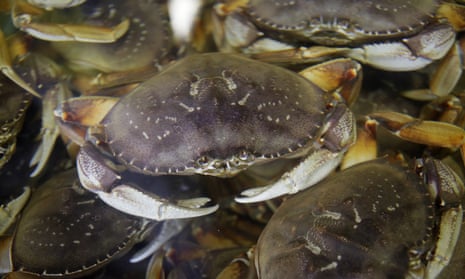The Pacific Ocean is becoming so acidic it is starting to dissolve the shells of a key species of crab, according to a new US study.
Scientists found that the Dungeness crab, one of the most valuable species for recreational and commercial fisheries, is starting to weaken as its larvae are affected by rising ocean acidity.
The study was published in the Science of the Total Environment academic journal and funded by the federal National Oceanic and Atmospheric Administration.
It found that acidity is affecting the shells of crab larvae, making them more vulnerable to predators and limiting shell effectiveness in supporting the growth of muscles.
Lower pH levels have also helped destabilize the larvae’s mechanoreceptors, increasing the possibility of loss of important sensory and behavioral functions.
The effect of acidity on adult Dungeness crabs is still unknown. The researchers hypothesized that “aberrant behavioral patterns found across various crustacean species … such as slower movement, less tactile, prolonged searching time, as well as impaired swimming” could be due to increased acidity.
Ocean acidity is a byproduct of burning fossil fuels. As carbon dioxide is released into the atmosphere, the gas dissolves into ocean water, producing weak carbonic acid.
Since the industrial revolution, the average pH of the ocean has fallen from 8.2 to 8.1, which corresponds to an increase in acidity of about 26%. Scientists and activists have long warned about ocean acidity and its harm to marine life.
Given that crustaceans play an important role in the marine ecosystem, the weakening of crustacean species could be devastating.
Another study published this month found that microplastics are affecting the reproduction of sand crabs, which eat by filtering small particles from sand. Sand crabs are themselves prey for seabirds, fish and marine mammals.
